September, 1944
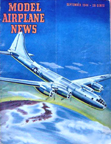
Boeing B-29 "Superfortress"
Model Airplane News Cover Art for September, 1944
by Jo Kotula
Click to Enlarge
The Boeing B-29 Superfortress was a four-engine propeller-driven heavy bomber that was flown by the United States Military in World War II and the Korean War. The name "Superfortress" was derived from that of its well-known predecessor, the B-17 "Flying Fortress", and carried on a series of names for Boeing-built bombers followed by the B-50, B-47 Stratojet and B-52 Stratofortress.
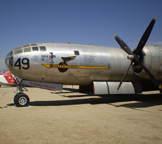
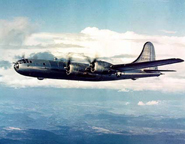
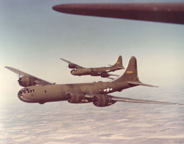
Photos of the Boeing B-29 "Superfortress"
Click to Enlarge
The B-29 was one of the largest airplanes to see service during World War II. A very advanced bomber for this time period, it included features such as a pressurized cabin, an electronic fire control system, and remote controlled machine-gun turrets. Unlike many other bombers, the B-29 remained in service long after the war ended, with a few even being employed as flying television transmitters for the Stratovision company. The B-29 was finally retired in the early 1960s, with 3,960 aircraft of all variants built.
Subsequent improvements led to the USAF B-50 Superfortress, portrayed on the October, 1951 Cover of Model Airplane News.
The B-29 project was among the costliest of World War II`. President Roosevelt wanted to keep China in the war and as our ally and devised a plan where long-range bombers would be based in China to attack Japan. Since planes with that range did not exist, the B-29 had to be created, tested and deployed in a very short period of time.
Manufacturing the B-29 was a complex task. It involved four main-assembly factories: a pair of Boeing plants at Renton, Washington and Wichita, Kansas, a Bell plant at Marietta, Georgia ("Bell-Atlanta"), and a Martin plant at Omaha, Nebraska ("Martin-Omaha"). Thousands of subcontractors were involved in the project. Because of its highly advanced design, challenging requirements, and immense pressure for production, development was complex, expensive, and troubled. In February 1943, the first prototype crashed during testing. Changes to the production craft came so often and so fast that in early 1944, B-29s would leave the production lines and fly directly to modification depots for extensive rebuilds to incorporate the latest changes. It was not until 1945 before the aircraft was operated with any sort of reliability.
Although the China bombing plan never came to fruition, the B-29 helped end the war -- the Enola Gay dropped the first atomic bomb on Hiroshima. The cost of the B-29 was about $3 billion 1944 dollars (about $75 Bil in $2009); the total cost of the Manhattan Project (and the Atomic Bomb) was about $1.9 billion in $1944 (About $50 Bil in 2009). By contrast, the cost of all other artillery, small arms, tanks, ammunition, planes, and bombs was $10 billion ($1944). Thus, the B-29 and the Atomic Bomb were about 33% of the total materiel cost of World War II. Each engine on the B-29 cost about $35,000 -- at a time when automobiles sold for about $1,000.
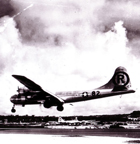
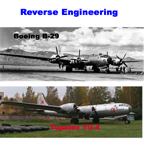
The Enola Gay and the Russian Copycat
Click to Enlarge
In an amusing sideshow, Captain Howard Jarrell and his 10-man crew took off from Chengdu, China, in July 1944 for a mission against a Japanese steel mill in Anshan, Manchuria. The plane developed engine problems and could not get back to China. The pilot headed toward the Allied base at Vladivostok, Russia to land the damaged plane. The Russian air force diplomatically interned the B-29 crew and kept the aircraft. Russians dismantled and studied the airplane. Stalin ordered that the B-29s be copied down to their smallest details. In a masterful display of reverse engineering, the Soviets produced the Tupolev Tu-4 "Bull" copy of the B-29 in 1947. Considering the cost data cited above, "Uncle Joe" certainly got himself a bargain by stealing the B-29.
Here is a video of the Boeing B-29 "Superfortress" in action:
In addition to the cover of Model Airplane News, this airplane was also featured in the WINGS "Friend or Foe" trading card series of the early 1950s
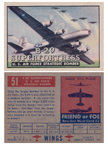
Trading card representation of the Boeing B-29 "Superfortress"
Click Here to see all 200 cards in the series
Click to Enlarge
Click Here for more information about the Boeing B-29 "Superfortress".
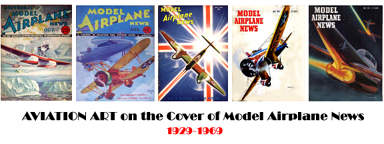
Click to go back and select another cover.
Counter for the Entire Site (not just this page..)
Home | About Lindy | Last Week's Reviews | Upcoming Events | 1940s Collecibles
The Guide - Establishments - Travel - Accessories
Music | Links | Photo Gallery | Extras | Contact